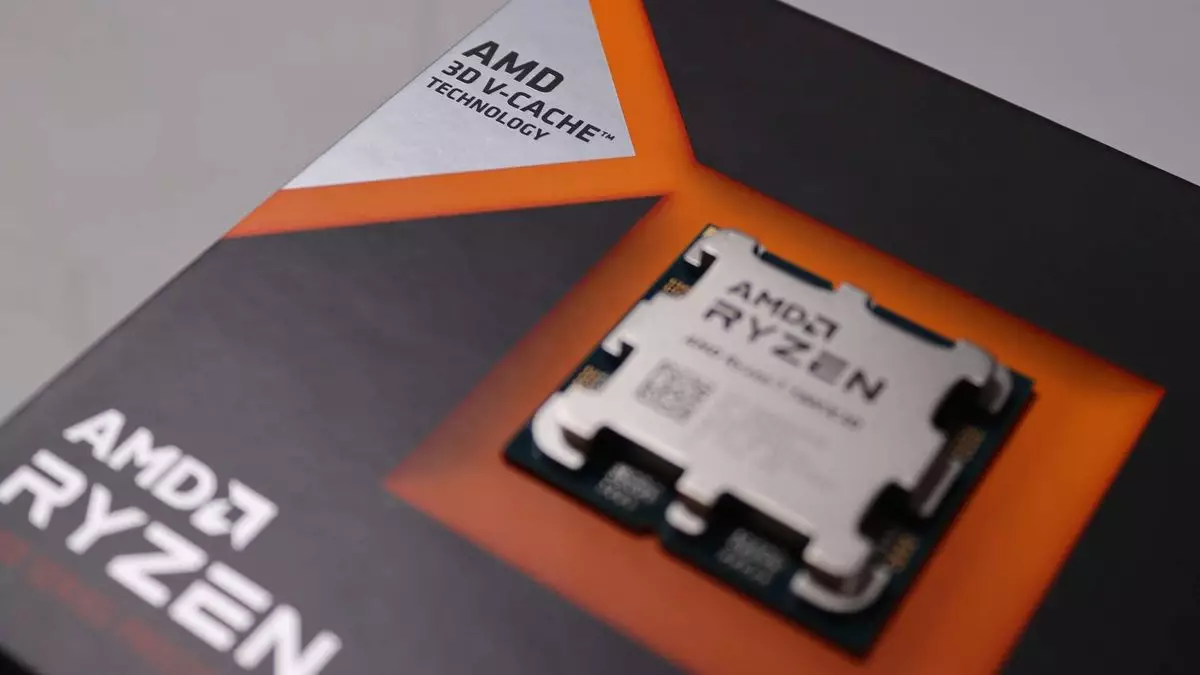AMD has recently unveiled its much-anticipated Ryzen 7 9800X3D, marking a significant leap in processor technology. Retailing at $479, this sophisticated chip is the flagship of AMD’s next-generation lineup, incorporating ground-breaking 3D V-Cache technology. This launch follows a wave of speculation and excitement within the tech community, especially after motherboard manufacturers released their details ahead of AMD. As the dust settles on this announcement, it’s time to dive deeper into how the Ryzen 7 9800X3D distinguishes itself from its predecessor, the 7800X3D.
One of the most striking features of the Ryzen 7 9800X3D is its impressive specifications. AMD has equipped the new processor with a base clock speed that is 500 MHz higher and a boost clock speed that is 200 MHz greater compared to the 7800X3D. These enhancements promise superior performance, particularly in demanding tasks such as gaming or content creation. However, while these raw numbers look promising, performance benchmarks in real-world scenarios will ultimately dictate whether consumers see tangible benefits from these improvements.
The innovative cache placement in the Ryzen 7 9800X3D is another compelling feature. Unlike the previous generation, where the 3D-stacked cache was placed above the processor, this new architecture sees the cache relocated underneath the chip. AMD describes this as a “revolutionary change,” and it carries significant implications for heat management and overclocking capabilities. A central advantage of this redesign is improved cooling efficiency, which could lead to enhanced performance stability during overclocking attempts. Past X3D processors were known for their lackluster overclocking potential, so this change may finally permit enthusiasts to push their systems to the limits.
When juxtaposed with the Ryzen 7 7800X3D, the 9800X3D retains core counts and thermal design power (TDP) the same, raising questions about potential performance leaps. The promised advantages of the new Zen 5 architecture and overclocking flexibility suggest a more captivating offering for gamers and professionals alike. However, only extensive, up-to-date performance evaluations can accurately gauge the enhancements promised by the new design.
Set against the backdrop of competitive pricing from Intel’s Arrow Lake lineup, the Ryzen 7 9800X3D must navigate a challenging market landscape. As technology enthusiasts await detailed reviews and performance reports, it is vital to consider AMD’s pricing strategy and the performance value it offers in contrast to its competitors. While the $30 increase compared to the 7800X3D may seem nominal, it may or may not be justified by the performance enhancements and technological advancements.
The Ryzen 7 9800X3D represents both a milestone in AMD’s development of processors and a critical juncture for its competitive stance against rivals like Intel. As potential buyers dissect its features, the final verdict will largely hinge on how well the processor performs in real-world applications and benchmarks. With anticipation brewing, the technological world eagerly awaits the forthcoming assessments of this innovative chip, hoping it lives up to its promise and reaffirms AMD’s dominance in the CPU market.


Leave a Reply